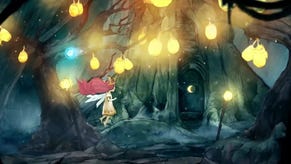Face-Off: Dark Souls
Soul survivor?
Speaking in terms of performance, Dark Souls' most notable improvement arrives by way of its completely open world, with only the initial loading screen after booting your save breaking you off from the gameplay experience. This works without a hitch on both consoles for the most part, despite the lack of a mandatory install on PS3, and permits you to run from one end of the world to the other, entirely uninterrupted, if you so choose.
Stuttering does occur occasionally, however, and it's usually more obvious in obscure, non-processor intensive scenarios, such as when climbing a ladder, ascending stairs or walking down a corridor. Due to the predictive nature of the level streaming in effect here, leaving and immediately returning to the same area causes a larger performance hiccup. Generally speaking though, these are anomalous circumstances which don't detract from the majority of play.
Another element of gameplay which has come to define the series is its satisfying application of the Havok physics engine. This time, most objects in any given room are destructible, unlike the inexplicably static objects, such as tables, that could sometimes decorate Demon's Souls' derelict towns. The improvement here means you can roll into any object that isn't integral to the level geometry with full confidence that it'll shatter to pieces.
Meanwhile, the rag doll physics on slain enemies in Dark Souls are every bit as frictionless and weightless as that of Demon's Souls'. This occasionally results in laughable, fourth-wall breaking moments where the limp bodies that hook around your character's ankles will whip around like rubber chickens for a few seconds, until some sharp turn thankfully dislodges them. It was an issue in Demon's Souls but, much like the wild ebb and flow of that game's frame-rate in spots, was warmly accepted as part of its ramshackle charm. This time though, it's a little harder to be so forgiving, given the opportunity for improvement.
Interestingly, destroying multiple crates or urns - a physics-based task which should favour the PS3's more powerful CPU - incurs frame-rate drops down to 25FPS, while, the 360 version typically gets away unscathed. During the boss fight demonstrated in the video below, however, destruction physics on the asylum columns have a dramatic impact on both consoles, with the PS3 version even nose-diving down to10FPS for a spell. On the flip-side, Microsoft's console appears to have its own specific issue with the volumetric fog used in the doorway barriers, which is unusual given that this should be handled by its more proficient GPU.
The good news is that, outside of these isolated instances, our frame-rate analysis tools show equivalent results in most other situations. The bad news is that, sadly, both consoles hold hands as they descend into the dark, cold, lonely world of single digit frame rates during later stages. This will be a familiar sensation to fans of the original Demon's Souls - particularly those who happened to progress far enough to see the notorious world 2-x, which could become a slide-show at points.
Dark Souls' liability to drop frames in this fashion is made evident much earlier on, with the combination of multiple assailing enemies and a fire-breathing wyvern in one sequence consistently causing drops to under 10FPS on both consoles. Also considerable is the way each version takes a jarring hit during actions involving particle effects, such as lighting bonfires, exploding fire bombs, and bleeding out from a series of arrow strikes, with the PS3 shedding a few more frames in like-for-like cases.
As a side note, it's worth pointing out that the 360's native party chat feature is blocked during gameplay. Much like in Demon's Souls, both versions of Dark Souls deliberately eschew any direct communication in favour of its own messaging system, which offers pre-defined phrases This is a design choice that, as with the anonymous nature of its co-op play, is set in place to enforce a strictly singular experience, and is unlikely to be rescinded through an upcoming patch. It's a curious choice that deprives the 360 version of what some may see as a default advantage.
In the final conclusion, image quality on both platforms is ostensibly identical, while performance is an apples and pears situation. Neither the 360 or PS3 version can definitively claim to have an absolute edge here, with Sony's machine taking volumetric effects in its stride, and Microsoft's handling destructible elements more convincingly. These are minor quibbles compared to the performance hit both consoles take in the face of particle effects and multiple enemies, however.
For the deciding vote, it's close enough for us to recommend either controller preference or the PS3 version's larger range of supported audio formats as more crucial points for consideration. It's clear From Software accepted no compromises when it set out to deliver the dark, fantastical world of Lordran, and to that end, an extreme price is paid in terms of playability at points. However, it's ultimately the same story whichever version you end up buying. In the run-up to its release much has been made of the game's promised difficulty, but it's ironic that Dark Souls is just as unforgiving towards your hardware as it is to you.
Article by Thomas Morgan.







